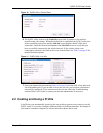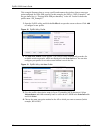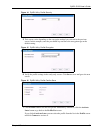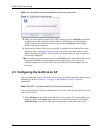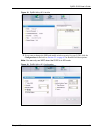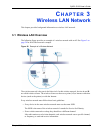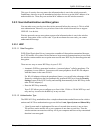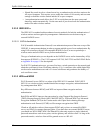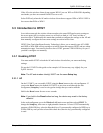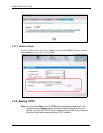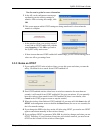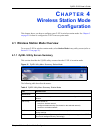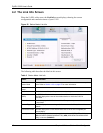
ZyXEL G-202 User’s Guide
Chapter 3 Wireless LAN Network 35
This type of security does not protect the information that is sent in the wireless network.
Furthermore, there are ways for unauthorized wireless devices to get the MAC address of an
authorized device. Then, they can use that MAC address to use the wireless network.
3.2.3 User Authentication and Encryption
You can make every user log in to the wireless network before they can use it. This is called
user authentication. However, every wireless client in the wireless network has to support
IEEE 802.1x to do this.
Wireless networks can use encryption to protect the information that is sent in the wireless
network. Encryption is like a secret code. If you do not know the secret code, you cannot
understand the message.
3.2.3.1 WEP
3.2.3.1.1 Data Encryption
WEP (Wired Equivalent Privacy) encryption scrambles all data packets transmitted between
the G-202 and the AP or other wireless stations to keep network communications private. Both
the wireless stations and the access points must use the same WEP key for data encryption and
decryption.
There are two ways to create WEP keys in your G-202.
• Automatic WEP key generation based on a “password phrase” called a passphrase. The
passphrase is case sensitive. You must use the same passphrase for all WLAN adapters
with this feature in the same WLAN.
For WLAN adapters without the passphrase feature, you can still take advantage of this
feature by writing down the four automatically generated WEP keys from the Security
Settings screen of the ZyXEL utility and entering them manually as the WEP keys in the
other WLAN adapter(s).
• Enter the WEP keys manually.
Your G-202 allows you to configure up to four 64-bit, 128-bit or 256-bit WEP keys and
only one key is used as the default key at any one time.
3.2.3.1.2 Authentication Type
The IEEE 802.11b/g standard describes a simple authentication method between the wireless
stations and AP. Three authentication types are defined: Auto, Open System and Shared Key.
• Open System mode is implemented for ease-of-use and when security is not an issue.
The wireless station and the AP or peer computer do not share a secret key. Thus the
wireless stations can associate with any AP or peer computer and listen to any transmitted
data that is not encrypted.



